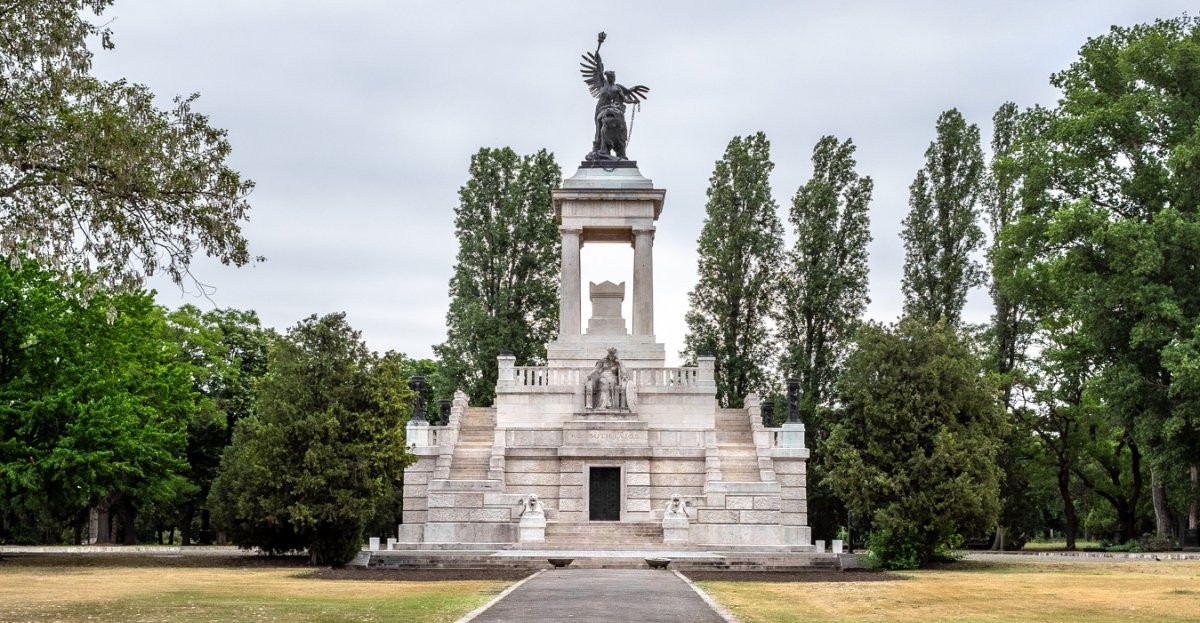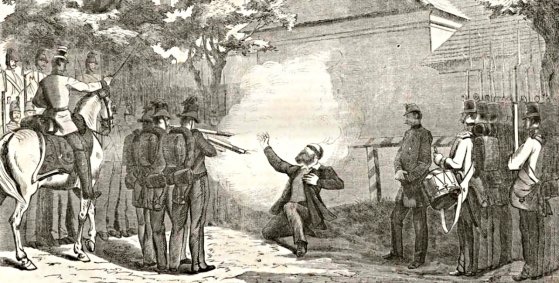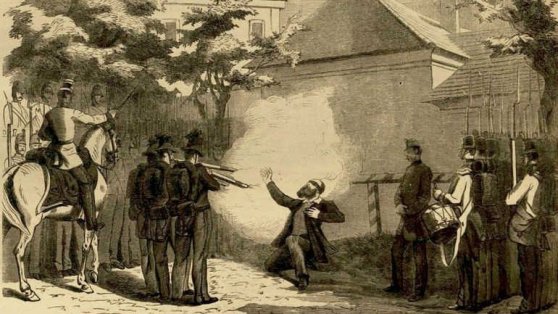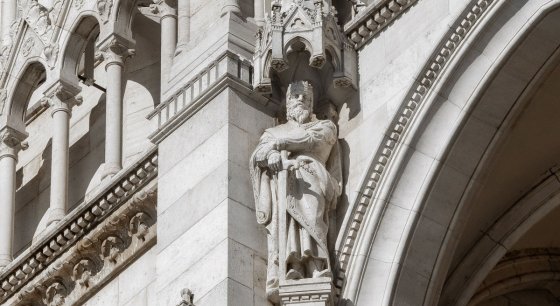 The „intertwined history” of the bridges and the city of Budapest
Which ideas and events have shaped the fate of bridges of Budapest and the cityscape? Alongside many other interesting facts, this question is also answered this newly published book by the Budapest City Archives, which introduces the history of bridges in Budapest.
The „intertwined history” of the bridges and the city of Budapest
Which ideas and events have shaped the fate of bridges of Budapest and the cityscape? Alongside many other interesting facts, this question is also answered this newly published book by the Budapest City Archives, which introduces the history of bridges in Budapest.
Lajos Batthyány
 Visitors are invited to the 1848-49 memorial walk in the Fiumei Road Cemetery on 15 March
Visitors are invited to the 1848-49 memorial walk in the Fiumei Road Cemetery on 15 March
March 12, 2023 at 2:00 PM
On 15 March, from 2 p.m., the National Heritage Institute will hold a walk at the Fiumei Road Cemetery National Memorial with the title "Memory of 1848-49". On the day of the holiday, people can also freely visit the largest tomb structures in the cemetery so anyone can look into the Batthyány, Deák and Kossuth Mausoleums.
The Pest stations of a life: A tragic fate that befell Lajos Batthyány
October 6, 2022 at 10:00 AM
On 6 October, Hungarians remember not only the 13 generals of the army executed in Arad, but also Count Lajos Batthyány, the martyred Prime Minister of Hungary's first responsible government, who was executed in Pest, in the courtyard of the New Building. An eternal flame has stood at the place of the execution since 1926, a worthy memorial to the count, who gave his life for Hungarian freedom. Batthyány, who became the leader of the opposition during the reform era, moved to Pest in 1841, visited many notable places in the capital, and Pestbuda now collected these on the tragic anniversary.
Lajos Batthyány's public reburial took place 150 years ago – The 42-year-old Prime Ministers was buried in secret after being executed
August 5, 2020 at 1:00 PM
The execution of Count Lajos Batthyány, the first elected Hungarian prime minister, remains an indescribable act of retaliation after the war of independence. The prime minister was buried in secret and then reburied publicly 21 years later, in 1870, with great pomp. The nation laid him to rest in a funeral fitting the difficult diplomatic solution worthy of a great politician.
Béla IV, died 750 years ago, founded Buda but does not even have a memorial plaque in the Castle District
July 6, 2020 at 8:00 AM
After the Tartar invasion, King Béla IV founded the city that is known today as Buda. He was looking for a place that would be impregnable during a next Mongol attack. He surrounded the plateau of Castle Hill with thick walls, parcelled and populated the area, and built monasteries and churches. Béla IV's Buda still exists today, the castle walls he built, the streets he walked on, the house walls and window frames he could see, the booths he could sit in, but not even a plaque preserves the name of the founder here.
More articles
 The „intertwined history” of the bridges and the city of Budapest
Which ideas and events have shaped the fate of bridges of Budapest and the cityscape? Alongside many other interesting facts, this question is also answered this newly published book by the Budapest City Archives, which introduces the history of bridges in Budapest.
The „intertwined history” of the bridges and the city of Budapest
Which ideas and events have shaped the fate of bridges of Budapest and the cityscape? Alongside many other interesting facts, this question is also answered this newly published book by the Budapest City Archives, which introduces the history of bridges in Budapest.
 The Bridge Report, which brought a turning point in the history of Budapest
A travel report that changed the history of Pest and Buda, as well as Hungary. The little book contributed to the change of half a thousand years of legal customs and the implementation of an investment of unprecedented size and technical quality. This book was The Bridge Report [Hídjelentés in Hungarian].
The Bridge Report, which brought a turning point in the history of Budapest
A travel report that changed the history of Pest and Buda, as well as Hungary. The little book contributed to the change of half a thousand years of legal customs and the implementation of an investment of unprecedented size and technical quality. This book was The Bridge Report [Hídjelentés in Hungarian].
 Drama on the university wall - The heroic monument was planned 95 years ago
In the constant hustle and bustle of the Egyetem Square in Pest, the students may not even notice the monument that decorates the short section of wall between the church and the central building of ELTE. However, it commemorates their predecessors, the heroes who fought for their country in World War I, and those who heroically helped them. The first design of the dramatically collapsing soldier was born in 1928, ninety-five years ago.
Drama on the university wall - The heroic monument was planned 95 years ago
In the constant hustle and bustle of the Egyetem Square in Pest, the students may not even notice the monument that decorates the short section of wall between the church and the central building of ELTE. However, it commemorates their predecessors, the heroes who fought for their country in World War I, and those who heroically helped them. The first design of the dramatically collapsing soldier was born in 1928, ninety-five years ago.



